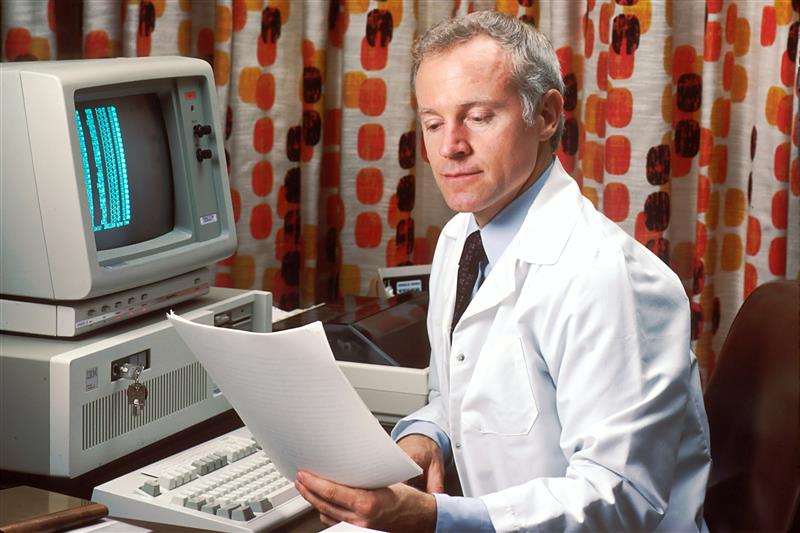
Software plays a pivotal role in transforming healthcare practices, offering numerous benefits that enhance efficiency, accuracy, and patient care. Here are some ways software improves medical practice:Software solutions in healthcare not only streamline administrative processes but also improve clinical outcomes, enhance patient engagement, and contribute to a more efficient and effective healthcare delivery system.
The software's integration capabilities with other systems, such as Electronic Health Records (EHR), further enhance workflow efficiency and data accuracy. Additionally, robust security measures ensure compliance with privacy regulations, safeguarding sensitive customer information. As Calgary's optical stores continue to grow and evolve, optical management software provides scalability to meet their changing needs and support their success in serving the local community.
Electronic Health Records (EHR):
EHR software digitizes patient health records, including medical history, diagnoses, medications, treatment plans, immunization dates, allergies, laboratory test results, and radiology images. This information is stored securely in electronic format, accessible to authorized healthcare providers from different locations. EHRs eliminate the need for paper-based records, reducing the risk of errors due to illegible handwriting or misplaced files. They also facilitate efficient sharing of patient information between providers, leading to better coordination of care and improved patient safety.
Clinical Decision Support Systems (CDSS):
CDSS software provides healthcare professionals with real-time clinical guidance and relevant patient-specific information at the point of care. It incorporates evidence-based guidelines, medical literature, best practices, and patient data to assist providers in making informed decisions. CDSS can alert clinicians to potential drug interactions, allergy risks, dosage errors, and guideline deviations. By offering timely reminders for preventive care and screenings, CDSS helps improve patient outcomes and adherence to recommended treatments.
Telemedicine and Telehealth Platforms:
Telemedicine software enables remote consultations between patients and healthcare providers via video conferencing, secure messaging, or phone calls. It allows patients to access medical advice, diagnosis, and treatment from the comfort of their homes, reducing the need for in-person visits, especially for routine or follow-up appointments. Telemedicine also facilitates specialist consultations and second opinions, overcoming geographical barriers and improving access to specialized care for patients in remote or underserved areas.
Medical Imaging Software:
Medical imaging software enhances the interpretation and analysis of diagnostic images such as X-rays, MRIs, CT scans, and ultrasounds. It includes features like computer-aided detection (CAD) algorithms, which can highlight areas of concern or abnormality for radiologists to review more closely. CAD systems help improve the accuracy and efficiency of image interpretation, leading to earlier detection of diseases, reduced interpretation errors, and better patient outcomes.
Health Information Exchange (HIE):
HIE software enables the secure sharing of patient health information between different healthcare organizations, such as hospitals, clinics, laboratories, and pharmacies. It allows providers to access comprehensive patient records, including medical history, test results, medications, and treatment plans, regardless of where the patient received care. HIE promotes care coordination, reduces duplicate tests and procedures, minimizes medical errors, and improves patient outcomes by ensuring that healthcare providers have access to timely and relevant information.
Healthcare Analytics and Population Health Management:
Healthcare analytics software leverages data mining, predictive modeling, and statistical analysis techniques to extract actionable insights from large volumes of healthcare data. It helps identify trends, patterns, and correlations within patient populations, enabling healthcare organizations to improve clinical outcomes, reduce costs, and enhance population health management strategies. By identifying high-risk patients, predicting disease outbreaks, and optimizing resource allocation, healthcare analytics software supports evidence-based decision-making and proactive interventions to improve patient care and public health.
Patient Portals and Mobile Health Apps:
Patient portals and mobile health apps empower individuals to take a more active role in managing their health and healthcare. These platforms allow patients to access their medical records, schedule appointments, request prescription refills, communicate with their healthcare providers, receive personalized health education resources, and track health metrics such as blood pressure, blood glucose, or physical activity levels. By facilitating better communication and engagement between patients and providers, patient portals and mobile health apps support shared decision-making, improve treatment adherence, and enhance overall patient satisfaction and outcomes.
Practice Management Software:
Practice management software automates and streamlines administrative tasks involved in running a healthcare practice, including appointment scheduling, billing, insurance claims processing, and inventory management. It helps healthcare providers optimize workflow efficiency, reduce paperwork, minimize billing errors, and improve revenue cycle management. Integration with EHR systems allows seamless exchange of patient information between clinical and administrative functions, enabling more coordinated and efficient practice operations.